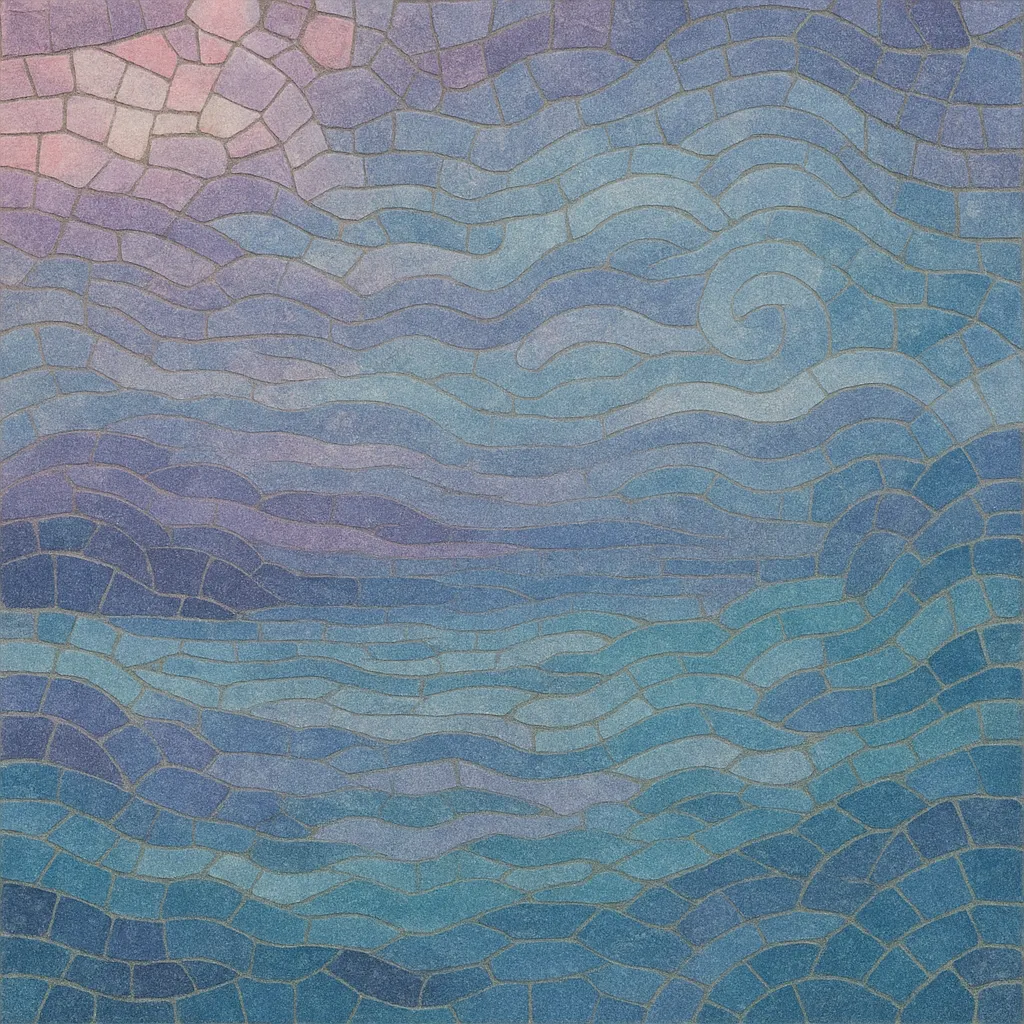
Slushwave is a vaporwave-derived microgenre that stretches samples and synth textures into foggy, glacial soundscapes. Tracks are typically very slow, drenched in reverb and delay, and layered with tape hiss, vinyl crackle, and other lo‑fi artifacts to create an enveloping, dreamlike ambience.
Rather than the chopped, ironic collage associated with early vaporwave, slushwave favors long pads, smeared chords, and minimal or absent percussion. When drums appear, they are subdued and distant. The genre often draws from new age, city pop, smooth jazz, and soft adult‑contemporary sources, pitching them down and elongating them into warm, melancholic drones that evoke late‑night memory, urban solitude, and liminal spaces.
Slushwave emerged within the broader vaporwave scene in the early 2010s, as producers began emphasizing extended ambience over rhythmic collage. Early releases by t e l e p a t h テレパシー能力者 explored stretched, reverb‑saturated textures that came to be described as “slush,” pointing to the genre’s slow, viscous sound. These experiments drew from ambient, hypnagogic pop, new age, and the lo‑fi sampling ethos of vaporwave’s eccojams.
By 2014–2016, labels and communities around ambient‑leaning vaporwave—most visibly Dream Catalogue—helped codify the sound. Albums and projects associated with HKE and the duo 2814 (HKE + t e l e p a t h) demonstrated how slushwave’s woozy pads and near‑beatless drift could support long‑form narrative ambience. Netlabels and tape imprints such as No Problema Tapes, Geometric Lullaby, Seikomart, and others fostered a steady stream of slushwave and adjacent ambient‑vapor releases.
As the decade progressed, slushwave’s aesthetic bled into dreampunk and other vapor substyles that prize atmosphere and cinematic mood over satire. Producers worldwide adopted the approach—long, hazed‑out loops; deep pitch‑shifting; environmental noise—while incorporating field recordings and urban sound design. The genre remains internet‑native, thriving on Bandcamp, cassette culture, and niche Discord communities.
Slushwave helped pivot vaporwave from ironic recontextualization toward sincere, immersive ambience. Its focus on texture, memory, and liminality strongly influenced dreampunk and the broader “utopian virtual” strand of ambient vapor, leaving an enduring template for slow, emotive, and deeply atmospheric electronic music.

